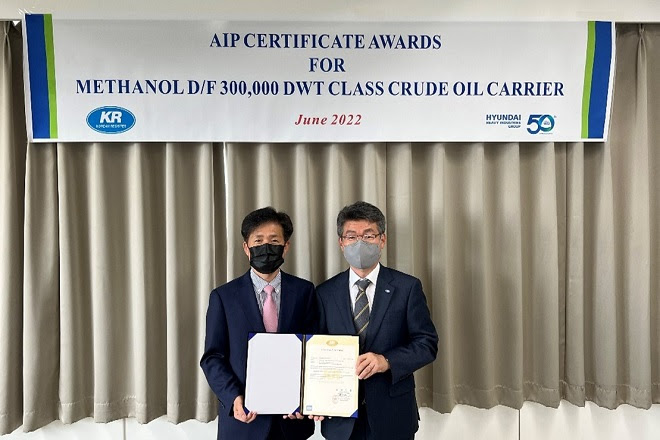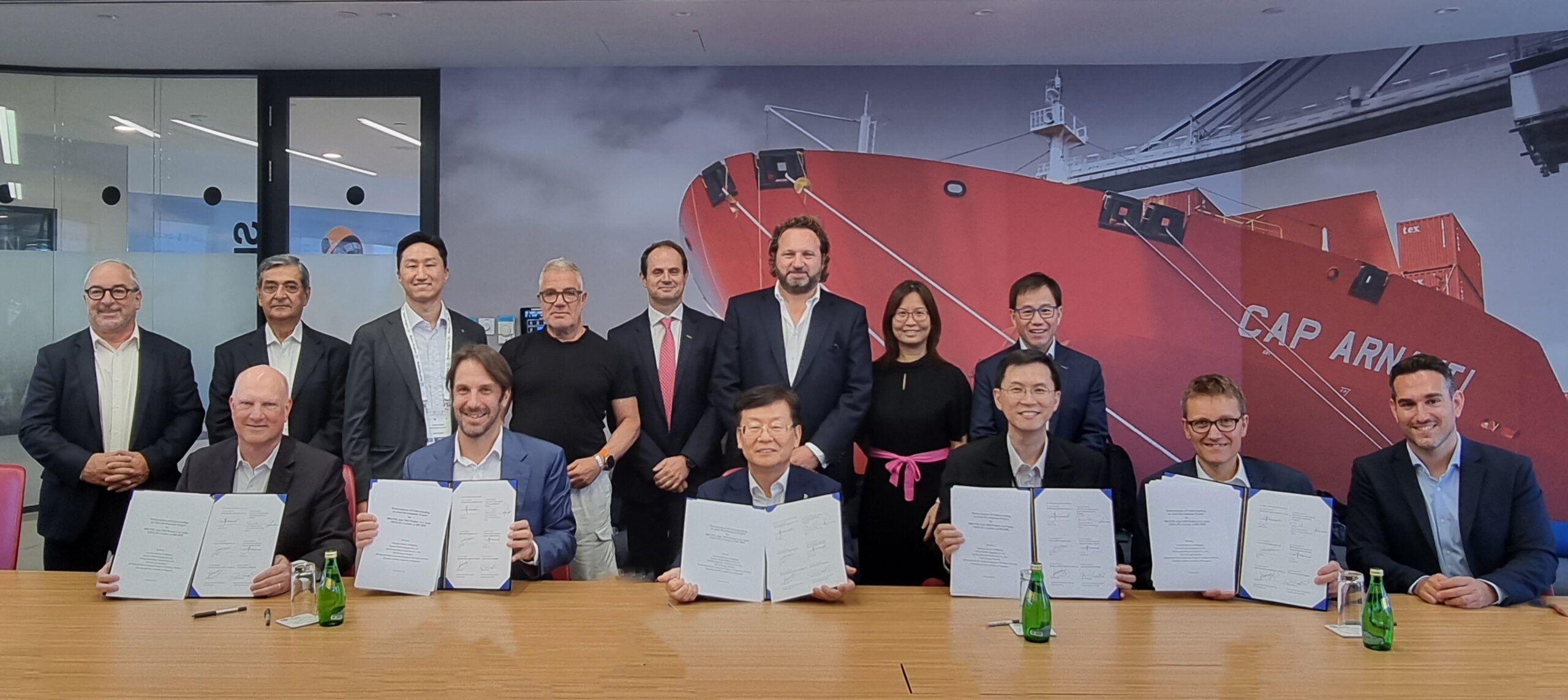Press Release: A methanol dual fuel 300,000 DWT crude oil carrier (VLCC) has received Approval In Principle (AIP) from Korean Register (KR).
As more of the world’s leading shipping companies place orders for vessels that use methanol as a dual fuel, interest for methanol as a ship propulsion fuel is growing.
Methanol is considered to possess high potential for commercialization because it offers fewer technical difficulties than LNG and relatively less toxicity than ammonia. Methanol can be stored in a liquid state at room temperature, similar to bunker oil, making it easier to store and transport compared to LNG, hydrogen and ammonia, which turn into liquid state at –162°C, -253°C, and –34°C respectively.
The methanol dual-fuel VLCC, which was developed under a joint project between KR and Hyundai Heavy Industries (HHI), is powered by methanol and marine gas oil (MGO). HHI has developed the vessel so that the methanol fuel tank can be placed in either the open deck or the cargo area and KR has verified the safety and suitability of the vessel’s design, ensuring it complies with domestic and international regulations.
At present, the proportion of LNG-fueled vessels continues to increase due to the fuel’s mature technology and supply infrastructure, but further transition to decarbonized alternative fuels is needed as strengthened greenhouse gas emission regulations come into force.
Although most methanol produced today is derived from fossil fuels, the proportion of e-methanol [1] is expected to increase as its fuel supply sources continue to expand, making it a much more competitive next-generation marine fuel along with green ammonia.
This AIP is the latest step in KR’s development of renewable fuel technology and the classification society will continue to provide technical support to clients to help them achieve decarbonization, developing technologies for ‘greener’ fuels, including methanol and ammonia.
1 E-methanol is produced by combining hydrogen generated by renewable energy and captured carbon dioxide. It is considered a carbon-neutral on its lifecycle basis.
Header image: representatives from KR and HHI at the AIP awarding ceremony
































